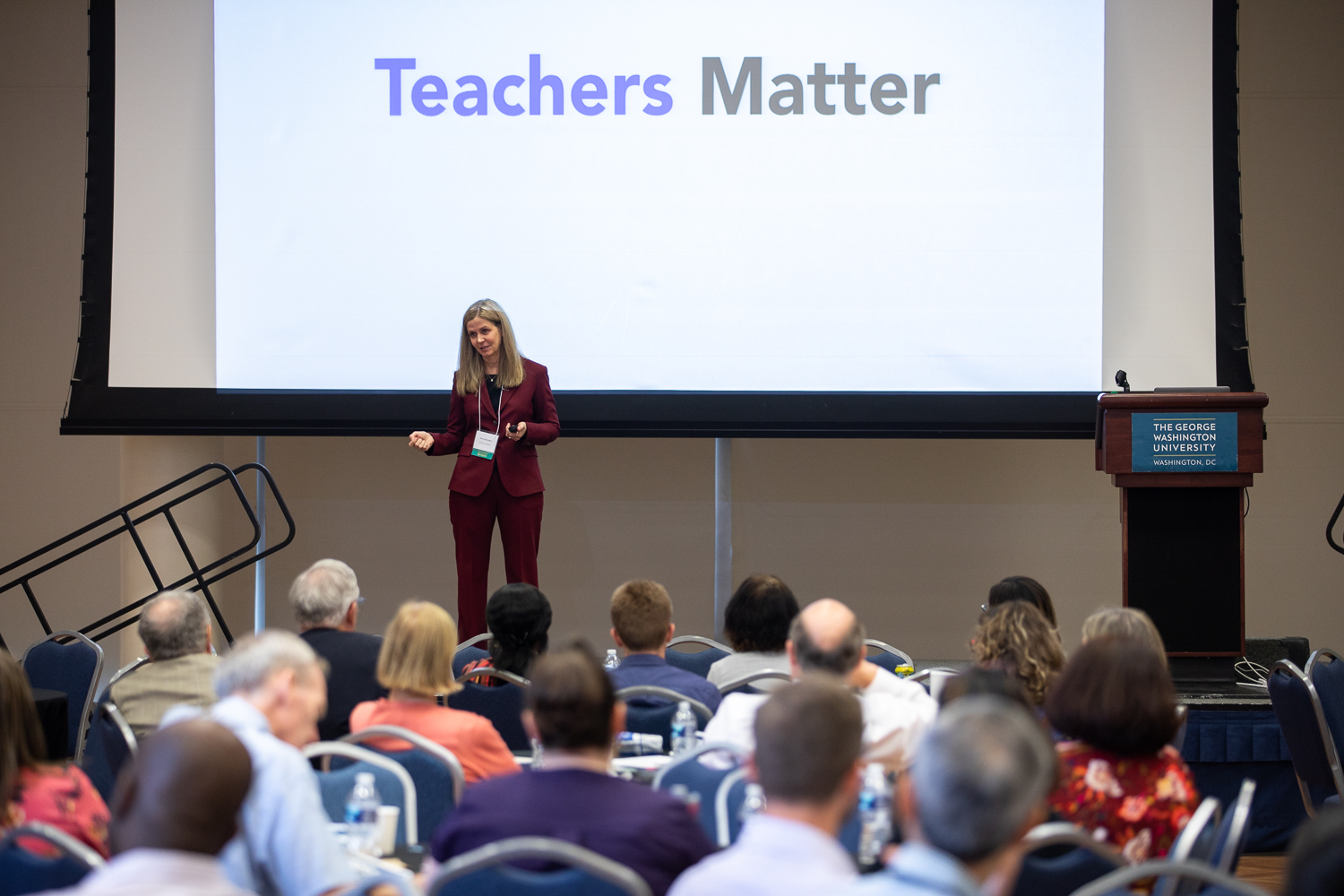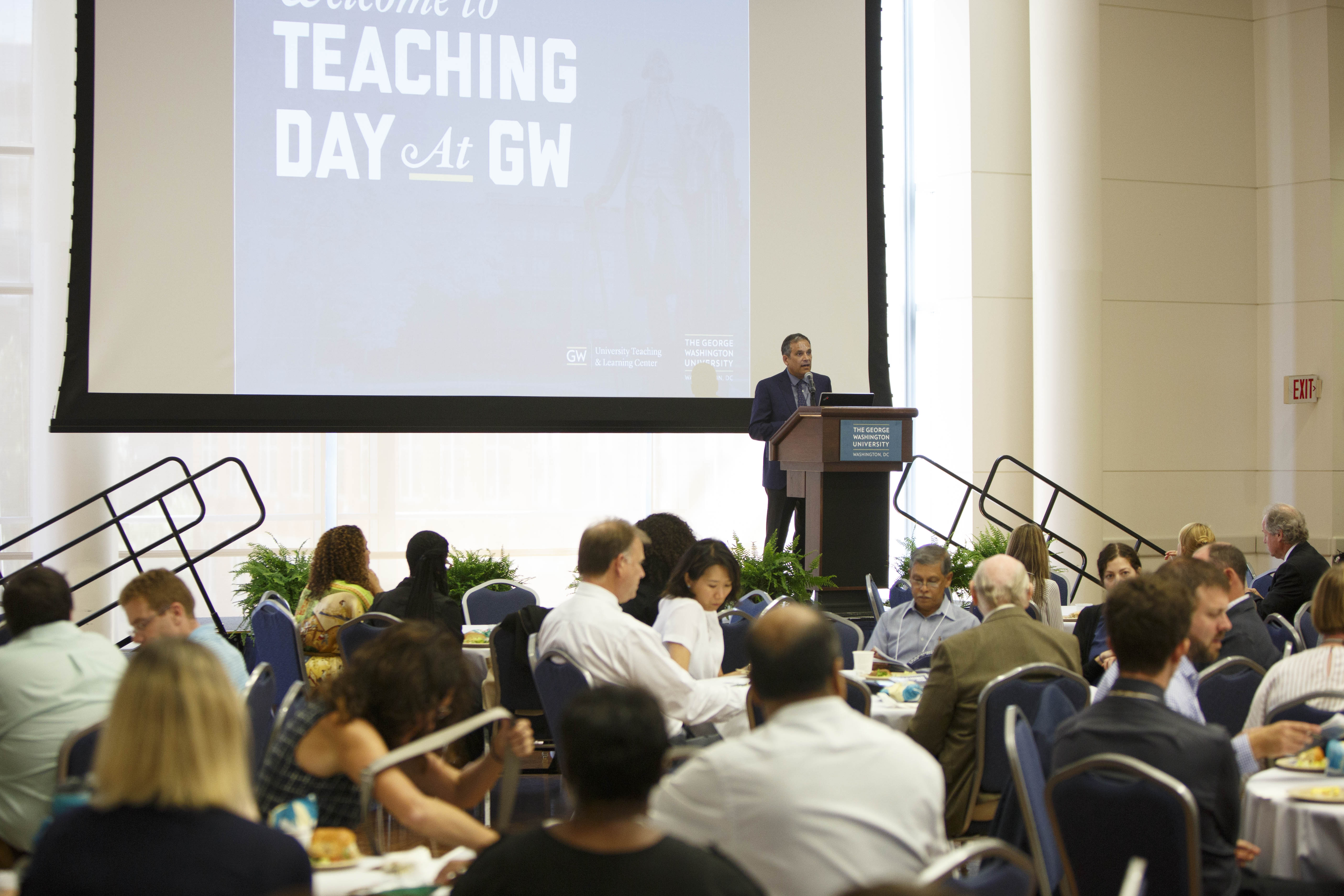By Ruth Steinhardt
The George Washington University Libraries and Academic Innovation (LAI) launched its new Instructional Core for Advocacy, Research, and Excellence (ICARE) in teaching and learning at last week’s Teaching Day, combining disparate resources for faculty development into a single unit.
ICARE aims to facilitate collaboration between GW instructors and experts at LAI, including instructional designers, teaching and learning specialists, instructional technologists, programmers, graphic designers and videographers. The existence of a single team means that faculty seeking help with instruction have one destination, whether they’re trying to launch an online class, improve their digital fluency, test their teaching techniques or discover evidence-based techniques for evaluation.
“The work of the LAI professionals and the instructors that they collaborate with has culminated in a new horizon for LAI—one that has called us to draw together the efforts from around the university into one cohesive unit dedicated to all things instructional,” said Gaetano Lotrecchiano, associate dean for innovative and collaborative pedagogy.
The initiative “pulls our various teaching and learning units together so that you as instructors don’t need to think twice about where to go,” Dean of Libraries and Academic Innovation Geneva Henry told roughly 200 faculty members who gathered for the ninth annual Teaching Day Friday afternoon.
Teaching Day annually brings instructors from across the disciplines together to discuss critical issues in teaching and learning. This year’s Teaching Day will be followed by the first open classroom days, at which faculty can visit colleagues’ classes to continue exploring and sharing pedagogical techniques.
Keynote speaker Claire Howell Major, a professor of higher education at the University of Alabama, discussed how teachers can use the way they evaluate students to improve their own pedagogy.
Teachers have to master both their content and their pedagogy—that is, they should understand both their subject area and how to communicate that subject to a given student audience, Dr. Major said. Teachers also need to know how to assess student learning: “We also have to know how they’re going to know if they know what we hope they know.”
And according to Dr. Major, assessing students can also be a way for teachers to assess themselves and improve their own pedagogy. They can, in short, become better teachers by fine-tuning the ways they evaluate students.
“We can learn through research on teaching,” Dr. Major said.
Among the unusual assessment methods she discussed was a business class in which the professor always tested his students twice: Once individually, as students traditionally take exams, and then as a group in open discussion. In all the years of the class’s existence, the highest scoring individual test taker never outperformed the lowest scoring group.
The same professor created scratch-off quizzes, giving students instant knowledge of their results (and apparently making the quiz-taking experience considerably more enjoyable).
“If you do it well, students won’t know if they’re being taught or assessed—and the reason is that it’s both,” Dr. Major said. “Teaching and assessment should be a seamless whole.”



